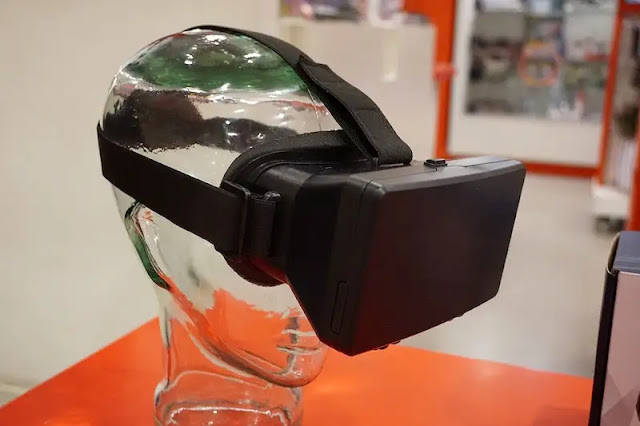Extended Reality (XR) is a term that encompasses all immersive technologies that merge the physical and digital worlds to create a seamless user experience. XR includes Virtual Reality (VR), Augmented Reality (AR), and Mixed Reality (MR), each offering a unique level of immersion and interaction.
What is Extended Reality:
XR is a broad term that encompasses all immersive technologies, allowing users to interact with the virtual world in real-time. The primary aim of XR is to create a seamless blend between the physical and digital worlds, providing users with an immersive experience that is difficult to distinguish from reality.
- Hardware and software, including cameras, sensors, displays, and input devices, make XR possible.
Market Forecast for Extended Reality:
| Year | Virtual Reality (VR) | Augmented Reality (AR) | Mixed Reality (MR) |
|---|---|---|---|
| 2019 | 7.9 | 0.7 | 0.2 |
| 2020 | 10.7 | 1.4 | 0.3 |
| 2021 | 14.6 | 2.4 | 0.6 |
| 2022 | 19.0 | 3.8 | 1.2 |
| 2023 | 24.2 | 5.9 | 2.1 |
Different Types of Extended Reality:
Extended Reality includes three main types of immersive technology: Virtual Reality (VR), Augmented Reality (AR), and Mixed Reality (MR). VR is a fully immersive experience that takes users into a completely digital environment, typically requiring a headset or a VR device.
AR overlays digital content onto the real world, typically experienced through a smartphone or a tablet, providing users with an enhanced view of the world. MR is a hybrid of VR and AR, allowing users to interact with both the physical and digital world simultaneously.
Applications of Extended Reality:
XR has numerous potential applications in various industries, including healthcare, education, entertainment, and manufacturing. For instance, in healthcare, XR technology can be used to train medical professionals and simulate surgeries.
In education, XR can enhance the learning experience by providing immersive and interactive content. XR can create a fully immersive gaming experience in entertainment and simulate assembly lines in manufacturing.
Advantages and Limitations of Extended Reality:
XR has numerous advantages, such as enhanced immersion, interactivity, and engagement. It can provide a more cost-effective and safe way to train employees, simulate environments, and test products.
However, XR technology has some limitations, such as high costs, limited accessibility, and potential safety risks. It also requires a high level of technical expertise and can be challenging to implement.
Table showing impacts of XR on education:
| Benefit | Description |
|---|---|
| Enhanced Learning | XR can provide immersive and interactive content that enhances the learning experience. |
| Improved Retention | XR can help students retain information better by providing a more engaging and memorable learning experience. |
| Accessible Learning | XR can make learning more accessible by providing content in various formats and allowing students to learn at their own pace. |
| Cost-effective | XR can reduce the cost of traditional teaching methods, such as field trips and physical equipment. |
| Real-world Experience | XR can provide students with real-world experience in a safe and controlled environment. |
The Future of Extended Reality:
XR has the potential to transform various industries and create new opportunities for businesses and consumers. The market for XR is projected to grow significantly in the coming years, with a compound annual growth rate (CAGR) of over 70% between 2020 and 2025.
The future of XR will be shaped by trends such as 5G connectivity, artificial intelligence, spatial computing, and XR cloud.
Potential Risks of XR Technology:
| Risk | Description |
|---|---|
| Motion Sickness | XR technology can cause motion sickness due to the disconnect between the virtual and physical environment. |
| Eye Strain | Extended use of XR devices can cause eye strain and other vision problems. |
| Cost | XR technology can be costly to implement, requiring specialized hardware and software. |
| Technical Expertise | XR technology requires a high level of technical expertise to develop and maintain. |
| Safety Concerns | XR technology can pose safety risks, such as tripping or colliding with real-world objects while immersed in a virtual environment. |
Frequently Asked Questions (FAQs):
A:VR is a fully immersive experience that takes users into a completely digital environment. AR overlays digital content onto the real world, while MR is a hybrid of VR and AR that allows users to interact with both virtual and real-world objects.
Q:What are the benefits of XR in education?
A:XR can enhance the learning experience by providing immersive and interactive content. XR can also help students understand complex concepts and skills, such as physics, engineering, and language learning.
Q:What are the potential risks of XR technology?
A:XR technology can be costly and require a high level of technical expertise to implement. It can also pose potential safety risks, such as motion sickness and eye strain.
Conclusion:
XR technology is a promising technology that is rapidly evolving and has a broad range of potential applications in various industries. It offers numerous advantages, including enhanced immersion, interactivity, and engagement, and has the potential to transform the way businesses and consumers interact with the digital world.
However, it also has some limitations and potential risks, requiring careful consideration before implementation. The future of XR is exciting, with significant growth projected in the coming years and new trends.







0 Comments